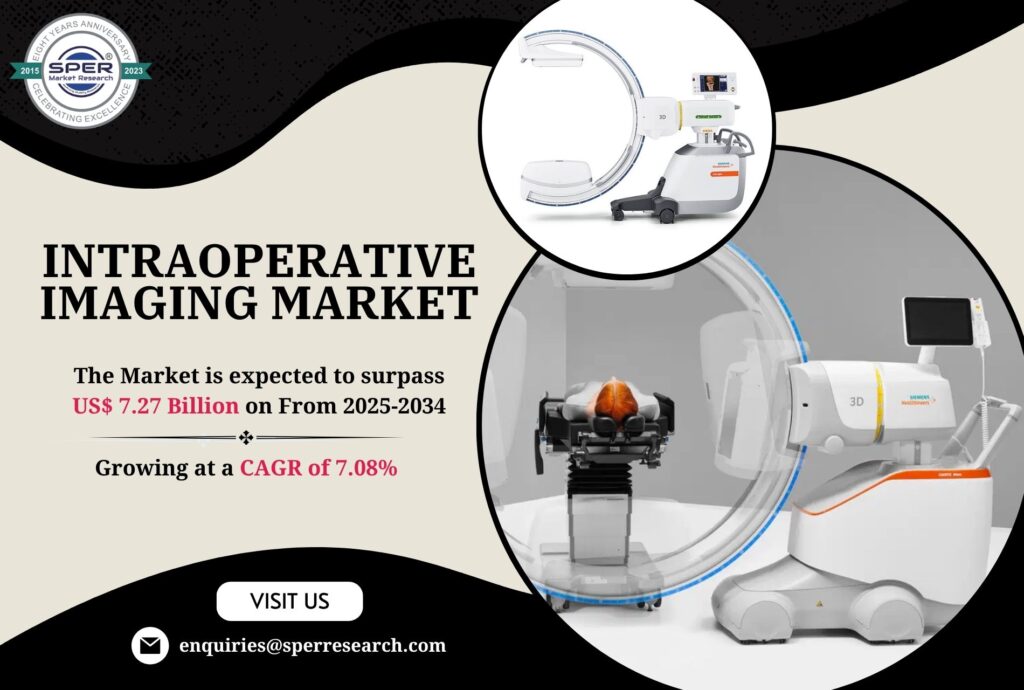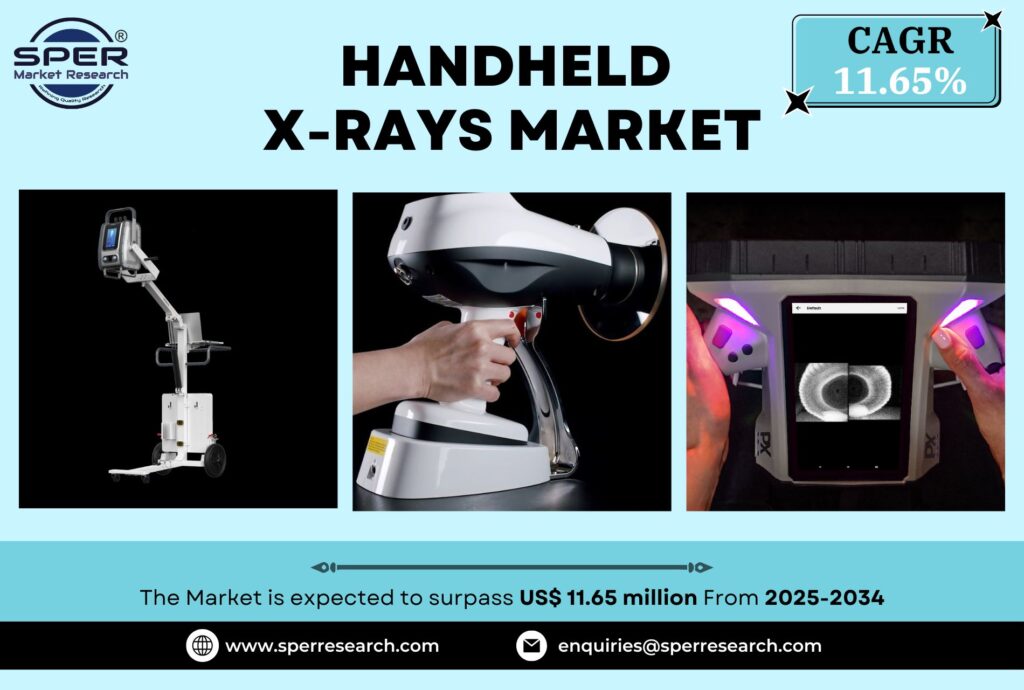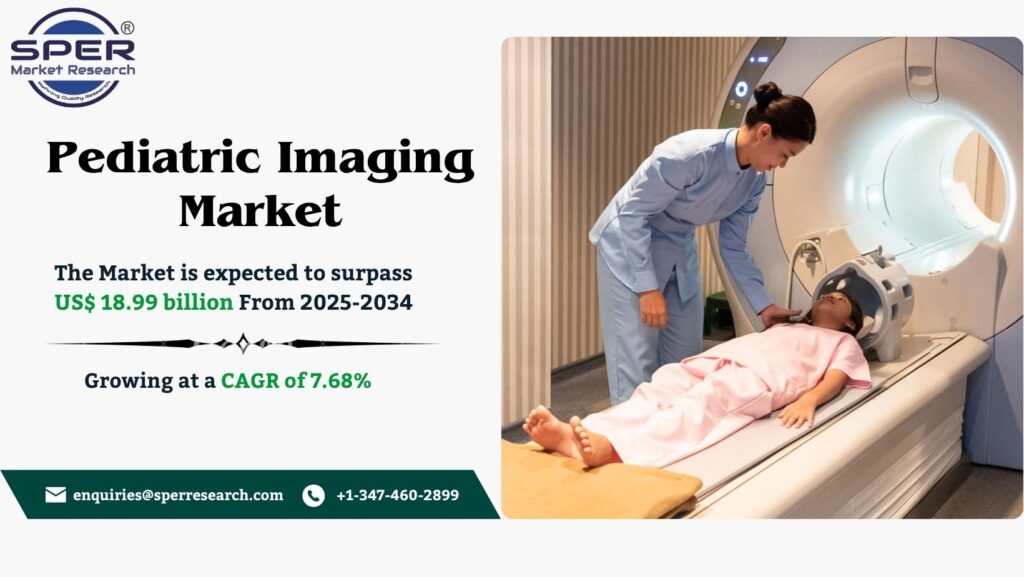Intraoperative imaging involves the use of advanced imaging systems during surgery to provide surgeons with real-time, high-resolution views of a patient’s anatomy. Technologies such as intraoperative MRI (iMRI), CT (iCT), C-arm, and ultrasound allow precise visualization of both soft tissues and bones while the procedure is underway. This real-time guidance enhances surgical accuracy, reduces the likelihood of repeat operations, and improves patient safety. Commonly applied in neurosurgery, orthopedics, cardiology, and related fields, intraoperative imaging supports better outcomes and helps streamline surgical workflows for medical teams.
According to SPER market research, ‘Global Intraoperative Imaging Market Size- By Product, By Application, By End Use – Regional Outlook, Competitive Strategies and Segment Forecast to 2034’ state that the Global Intraoperative Imaging Market is predicted to reach 7.27 Billion by 2034 with a CAGR 7.08%.
Drivers:
The growth of the intraoperative imaging industry is fueled by increasing demand for minimally invasive surgeries, rising cases of chronic illnesses, and a growing elderly population. Real-time imaging enables greater surgical precision, fewer complications, and better outcomes, driving wider adoption across medical fields. Advancements in artificial intelligence, multimodal imaging, and AR/VR, along with portable handheld devices, are further accelerating progress. Moreover, mergers and acquisitions help strengthen innovation and market reach, while regulatory policies play a vital role in ensuring patient safety, improving care standards, and promoting technological advancement in medical imaging.
Download the Detailed Analysis in PDF format, Here
Restraints:
The intraoperative imaging market encounters multiple challenges that hinder its widespread adoption. High acquisition and installation costs make these systems less accessible, particularly for smaller hospitals and healthcare facilities in developing regions. The requirement for advanced surgical infrastructure further adds to implementation barriers. Moreover, the complexity of these technologies demands specialized training for surgeons and staff, delaying seamless integration. Stringent regulatory approvals also slow down innovation and product launches, while concerns about radiation exposure in certain imaging modalities remain an issue.
North America dominates the intraoperative imaging market, driven by the strong presence of major players committed to product innovation, strategic acquisitions, and ongoing research efforts aimed at improving operations and delivering high-quality medical imaging solutions. Some significant market players are Brainlab AG, Canon Medical Systems Corporation, GE HealthCare, IMRIS, Koninklijke Philips N.V., Medtronic plc, NeuroLogica Corp., Shimadzu Corporation (Medical Systems)
For More Information, refer to below link: –
Intraoperative Imaging Market Growth
Related Reports:
Japan Medical Devices Market Size
Europe Medical Aesthetic Devices Market Size
Follow Us –
LinkedIn | Instagram | Facebook | Twitter
Contact Us:
Sara Lopes, Business Consultant — USA
SPER Market Research
enquiries@sperresearch.com
+1–347–460–2899









